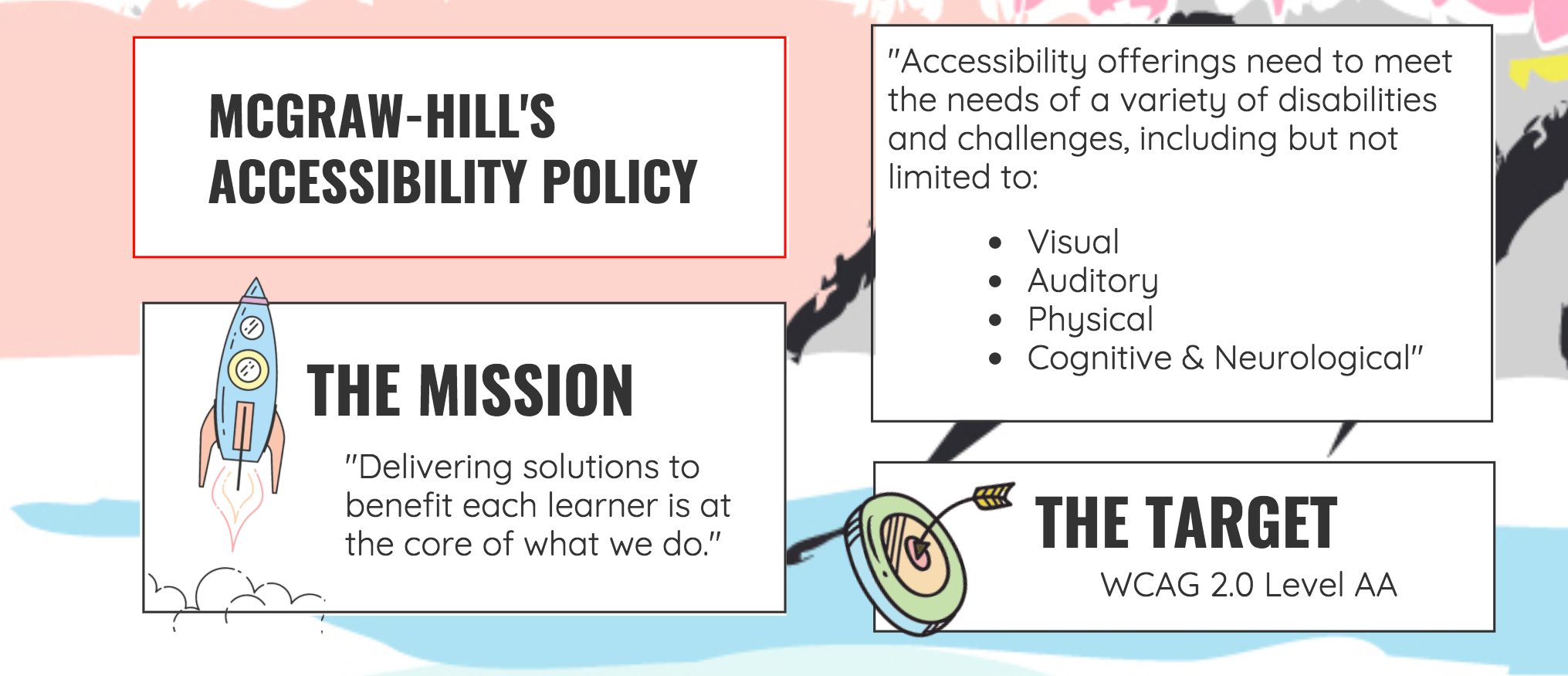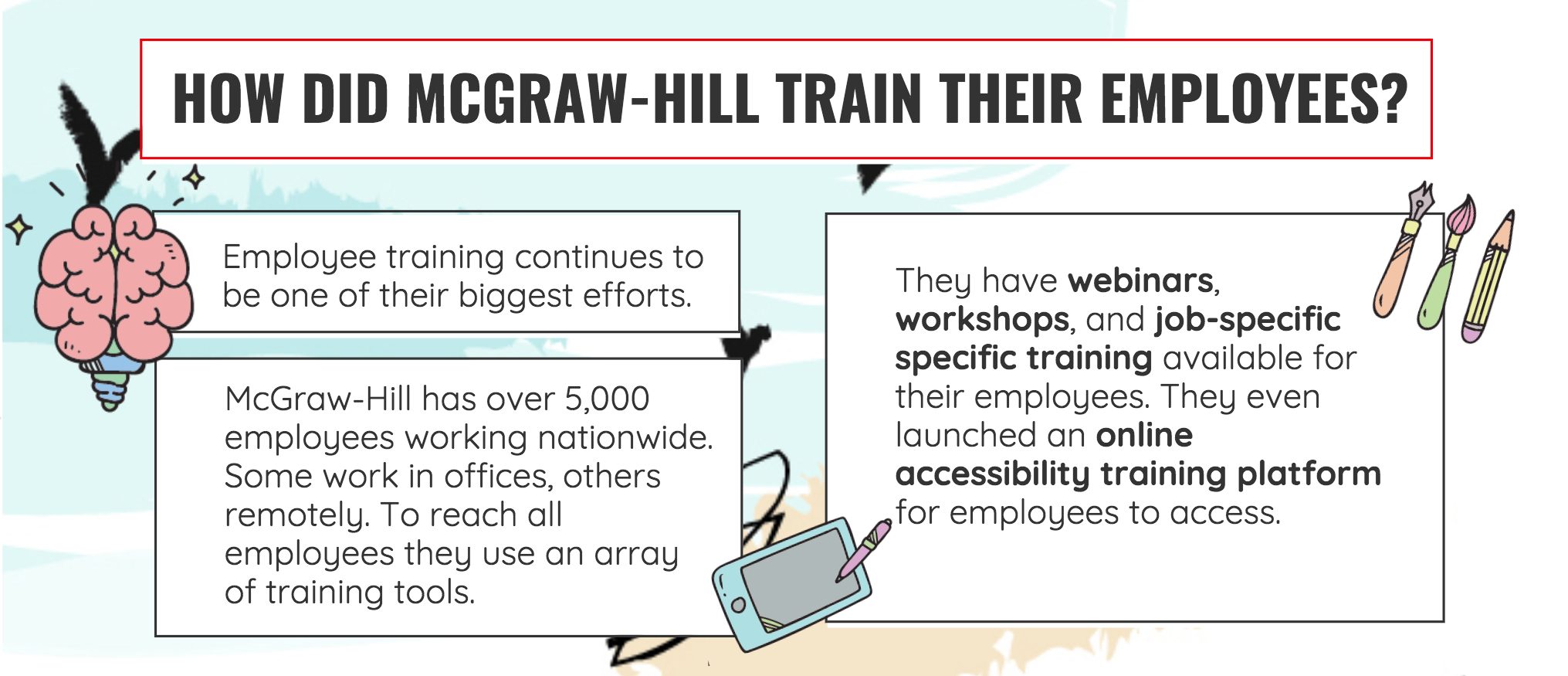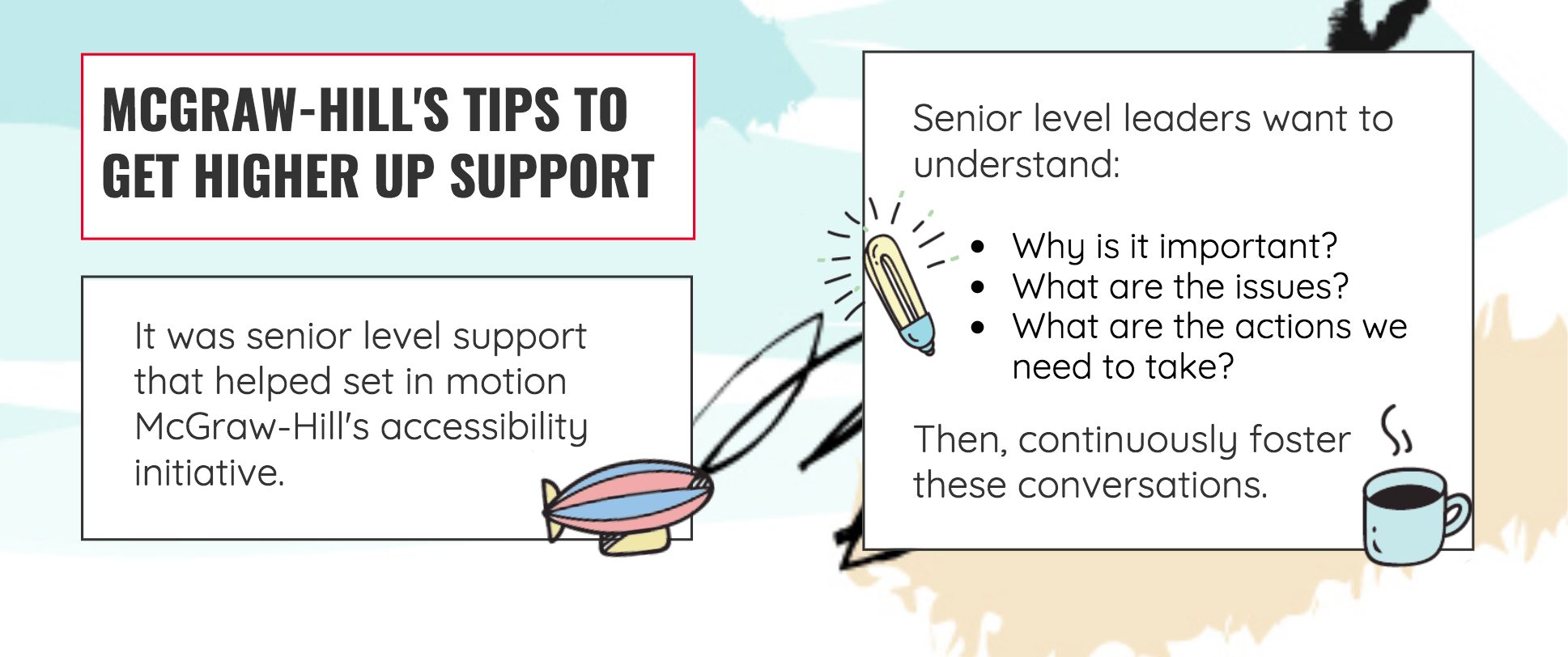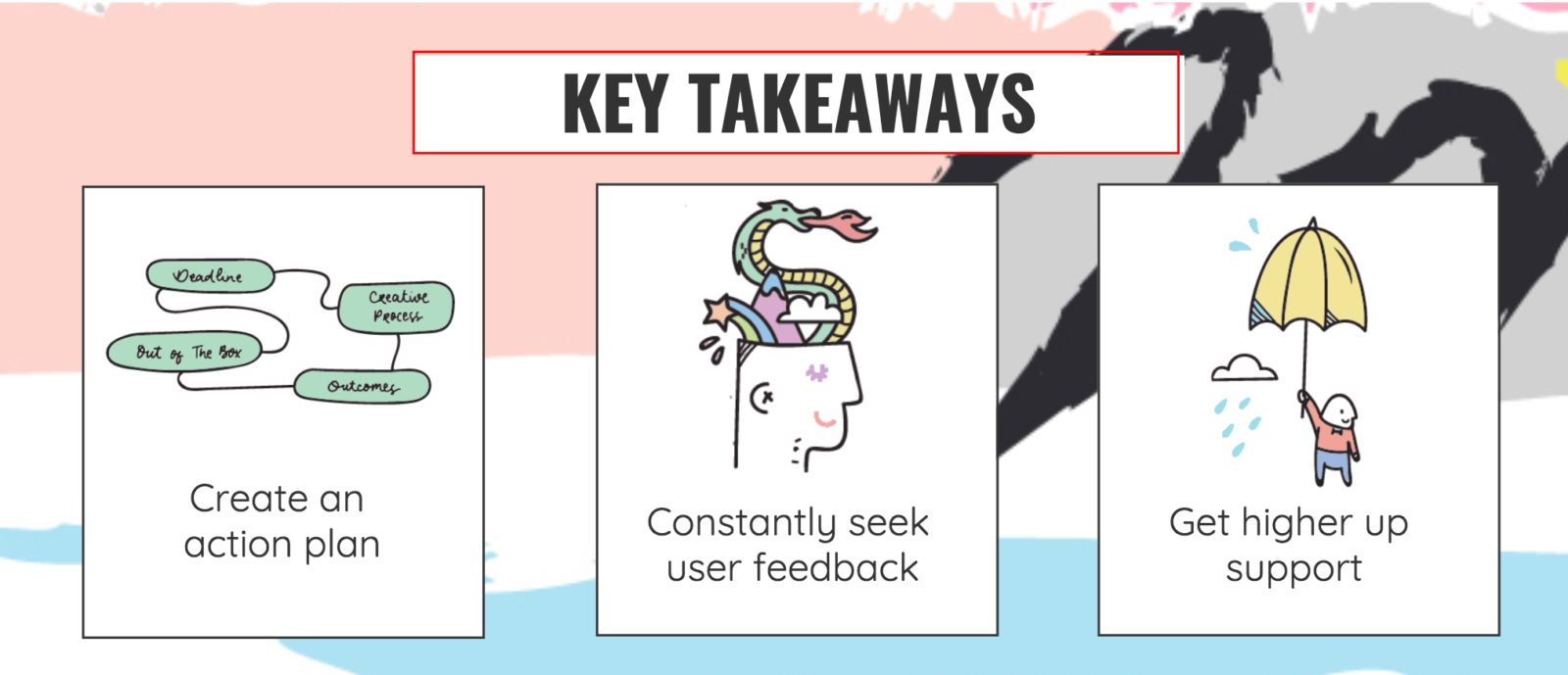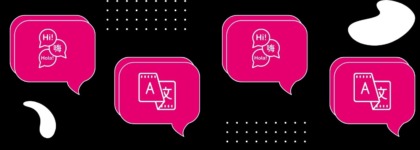McGraw-Hill’s Four-Phase Accessibility Cycle
Updated: April 20, 2021
McGraw-Hill’s vision is to “unlock the full potential of each learner.”
For over 129 years, McGraw-Hill has been providing innovative solutions to educators and students. But what began as a predominantly print business is steadily becoming a digital business.
For McGraw-Hill, the digital realm is an opportunity to achieve their vision of reaching every learner. Digital content is not only easier to disseminate, but it also makes it more accessible to a wider range of people.
Over the last couple of years, McGraw-Hill has been actively working to ensure their digital materials are accessible.
In the webinar How McGraw-Hill is Formulating a Unified Approach to Digital Accessibility, Lin Mahoney, Accessibility Lead, and Scott Virkler, Senior Vice President, from McGraw-Hill, gave a glimpse into the company’s accessibility strategy.
Below we explore the four-phase accessibility cycle that has helped them centralize their approach.
The MHE Accessibility Council
When McGraw-Hill entered the digital business, they acquired technology from an array of different places. As a result, there was a lot of disparity across the company – in particular, with accessibility.
In order to centralize their mission, they created a centralized group, the MHE Accessibility Council.
The council is composed of people from different levels of the company. This diverse representation allows for a greater understanding of where the company is at in regards to accessibility while harnessing more effective communication of the company’s accessibility mission.
According to Scott Virkler, “The Council was a key part so we could at least have a centralized function that could get us on a shared definition and shared understanding of what it was we were trying to accomplish and why.”
Through this council, they established a mission and made WCAG 2.0 Level AA the accessibility target to meet for each product.
The Accessibility Cycle
McGraw-Hill’s accessibility cycle is the key to their success.
Through their four-phase cycle, McGraw-Hill is able to continuously improve and innovate new products. They were also able to centralize their accessibility policy.
At the core is research followed by continuous testing and feedback.
Phase 1: Build the foundation
For McGraw-Hill, phase one is all about research and communication.
But when they first began trying to centralize the company, this meant setting an accessibility foundation through an accessibility policy. Once the policy was in place, they began educating the rest of the company.
A big part of this entailed training both employees and vendors.
As mentioned, McGraw-Hill works with a diverse set of vendors, so ensuring that everyone was on the same page was understandably “a hurdle.” As Scott Virkler puts it, “…we had many people that we were working with. (We had to) make sure that we all understood the philosophy.”
A team that truly understands the purpose and meaning of accessibility helps propel the mission forward. Spending time to train employees and vendors is crucial for a strong foundation and a reason behind McGraw-Hill’s success.
Within this phase, McGraw-Hill also started gathering information. This meant:
- Working with third-party auditors to understand what McGraw-Hill is doing and where they need to be in regards to accessibility
- Reaching out to customers, students with disabilities, and disability services offices to find out where McGraw-Hill could help the most
Once a strong foundation was set for the company, they used phase two to outline accessible solutions.
Phase 2: Develop research-backed solutions
Powered by research and knowledge, the next phase is all about creating accessible solutions.
In the beginning of centralization this meant:
- Building purchasing criteria to ensure any vendors they partnered with are accessible vendors
- Updating authoring systems to create accessible content
- Creating a strategy for tackling the accessibility of existing products
With every solution that McGraw-Hill comes up with, they always circle back to the user to hear their thoughts and find gaps in the solution. As Scott Virkler puts it, “You need to make the investment to be able to go out and engage [the user], listen to what they have to say. It’s not going to all be good. There will be the good, the bad, and the ugly.”
Phase 3 and Phase 4: Build, test, and deploy, then evaluate and iterate
Phase 3 and phase 4 go hand in hand, and often, there is a lot of back and forth.
Once a product is built, it needs to be tested and evaluated. User feedback is crucial, and McGraw-Hill welcomes both positive and negative feedback.
Negative feedback is always welcomed at McGraw-Hill because it allows them to understand the use of the product better and, ultimately, come out with a truly compliant solution.
Even when a new product gets released, there is always a list of updates that follow. The team keeps going back and forth between phases until the most usable product is developed.
The Future
Lin Mahoney says the company’s future is to have accessibility integrated into the workflow, without the need of support. As she puts it, “Our goal is to decrease the need for accessibility support and really focus on bringing accessibility central into everything that we offer.”
McGraw-Hill’s story proves that it’s possible to centralize accessibility at a large organization. It just takes dedication, organization, and hard work to ensure that the whole team is on the same page.




